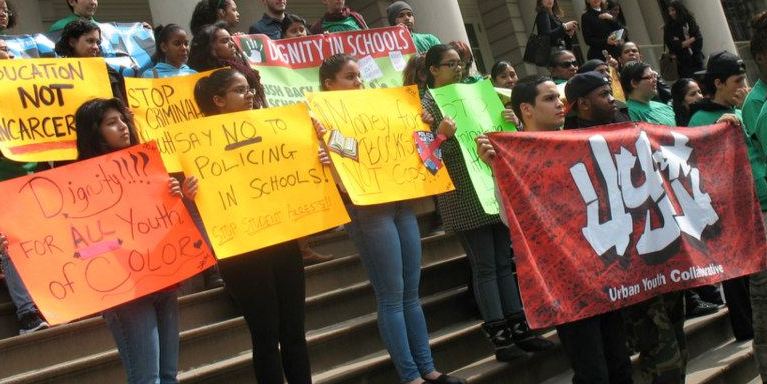
Urban Youth Collective
Members of the Urban Youth Collaborative demonstrate at City Hall for a more restorative approach to school discipline.
Fed up with frequent suspensions and arrests, anxious to end the funneling of low-income students of color into the prison system and ready to take things into their own hands, student and community groups across the city are trying to provide alternatives to the “zero-tolerance” discipline practices of the Bloomberg era.
Reformers point to the increase in safety agents after the NYPD assumed authority over school security in 1998—from 3,200 to over 5,000 agents—and the rise in suspensions from about 44,000 to a high of 74,000 in 2009-2010. While Black and Hispanic students constituted 77 percent of the city’s school population, they made up 88 percent of these suspensions.
City Limits has reported on the difficulty of evaluating the success of Bloomberg’s school discipline strategy, and described some of the reform struggles of the past five years, including the long battle over and ultimate passage of the School Safety Act, which standardized a system for submitting complaints about School Safety Officers and required the DOE to report on the number of students arrested or summonsed in school. The DOE has also made efforts to protect students from the criminal justice system, banning long-term suspensions for low level infractions and offering some professional development workshops in alternative methods of discipline.
Many students and community groups are not waiting for top-down change. They are leading grassroots campaigns to reshape the way their own teachers, principals and Safety Agents understand student behavior. A case in point is Franklin K. Lane High School in East New York—a school with a history that indicates the way attitudes toward school discipline have evolved over the past 10 years.
From “impact schools” to “restorative justice”
At the start of the 21st century, Lane was considered one of the most dangerous schools in the city, infamous for high rates of robbery, assault, and gang-related shootings. In 2004, the DOE designated Lane an “Impact School”—one of the 12 most dangerous school facilities. Consciously imitating the policing tactics spearheaded by the Police Department under Guiliani, the Bloomberg administration assigned additional safety officers to Impact schools to monitor hallways, screen entranceways and remove disruptive students.
“If you concentrate on the small things, you will send an unequivocal message that order is the end of the day,” said Rose Albanese-DePinto, director of the Department of Education’s Office of Safety, to a New York Times reporter in 2004. “You can look at a school the same way you look at a neighborhood.” Within a year, the DOE reported that major crime incidents at Lane High School had fallen by 83 percent.
Despite the drop, the school continued to struggle, posting low test scores, registering poor results on parent and student surveys and earning a grade of “D” in 2006. The following year, the DOE phased out the school (most of the other Impact schools went the same way) while introducing five smaller schools with specialized focuses. According to this year’s Learning Environment Surveys, between 80 percent and 100 percent of students on the Lane campus feel safe. But a separate survey—one conducted by students—revealed students’ desire for alternative forms of intervention that don’t lead to suspensions.
“[Student Safety Agents] don’t connect with the youth the way we connect with teachers or ourselves,” says Matthew Evans, a senior at the Academy of Innovative Technology, one of the new school’s in Lane’s building. “They don’t have the proper training.’
Evans is part of Future of Tomorrow, a group of students on the Lane campus dedicated to education reform and assisted by organizers at The Cypress Hills Local Development Corporation. In place of zero-tolerance school discipline, the group hopes to start peer mediation programs, student-facilitated town-hall meetings, and student-led trainings for school safety agents and teachers. In the past year, they have hosted workshops for eight of the campus’s 14 Student Safety Agents to discuss the school-to-prison pipeline and create opportunities for dialogue between agents, students and staff. All of these methods are encompassed in their mission to introduce the campus to “restorative justice practices.”
Also known as “positive discipline,” restorative justice is “a theory that emphasizes repairing the harm caused by conflict—rather than punishment—by identifying what happened and attempting to repair the harm done,” according to Dignity In Schools, a national coalition of organizations dedicated to promoting alternatives to zero-tolerance discipline. Dignity In Schools supports the growth of restorative justice programs at several New York City schools.
One such school, Validus Preparatory Academy in the Bronx, implements a Fairness Committee, consisting of students and staff, to mediate conflict. Both students and staff have the right to petition for a hearing before the committee if they feel another member of the school community has violated the school’s four values of Responsibility, Collaboration, Compassion, and Commitment.
The New Settlement Parent Action Committee, also in the Bronx, received funding from Dignity In Schools to host large-scale workshops for School Safety Agents. Parents were concerned that Bronx students had received more than 50 percent of school-issued summons in 2011-2012, and believed the NYPD’s 15-week training course for safety agents failed to teach agents about positive methods of resolving conflict. Partnering with the Children’s Defense Fund and the Bronx Defenders, the Committee began facilitating an ongoing partnership with the DOE and NYPD School Safety division. Since 2012, the Working Group has hosted principals’ round tables to share positive discipline strategies between schools, conducted school surveys, organized conversations within schools and coordinated community-led workshops for almost 700 School Safety Agents.
At least eight other schools and two multi-school campuses have organized restorative justice programs, according to a report by Dignity in Schools and a 2013 report by then-Comptroller John Liu.
As these reform efforts took shape, DOE and independent advocates, rates of student arrests decreased by over 32 percent in 2013-2014, while rates of suspensionsdecreased by 23 percent in 2012-2013, the latest year of data available.
But Lawrence Booker, a member of Future of Tomorrow and the student-led education coalition Urban Youth Collaborative, says that student-led campaigns on the Lane Campus are not enough: “We need to change things systemically through the Department of Education.”
A call for system-wide change
Urban Youth Collaborative hopes the de Blasio administration will make a major shift away from zero-tolerance tactics. The group advocates for an expansion of restorative justice programs to all schools, and revisions to the DOE’s Discipline Code to ban suspensions for low-level misbehavior, particularly the infraction known as “B21,” or “Defying Authority.” (The group stepped back on their previous demand to return School Safety Agents back to DOE control, an idea Mayor de Blasio has said he would not support.)
“When you have a really ambiguous policy in your school discipline code, it has a disparate proportion of impact on students of color, students with disabilities, students that identify as LGBTQ,” says Kesi Foster, an organizer with Urban Youth Collaborative.
Dignity in Schools also seeks changes to the Discipline Code. In addition to banning suspensions for B21, the coalition hopes to mandate that all schools use “Guidance Interventions”—including counseling, mediation, and other restorative justice methods—before suspending a student. They recommend the city fund a citywide restorative justice program, beginning with a pilot at schools where students are at high risk of suspension or arrest. They further call for the minimization of police presence and metal detectors, and more opportunities for parents and community members to meet with School Safety Agents.
The 2013 comptroller’s report also demanded “whole-school climate change,” and called on the city to begin a restorative justice pilot program starting with 30 middle schools at a cost of $633,000 per year and increasing to 100 middle schools over four years. It cited successful examples of programs in Baltimore, Oakland, Denver, Chicago, Minnesota and Portland, Oregon.
Advocates are hopeful the new administration will launch New York City onto a similar path. As public advocate, de Blasio criticized zero-tolerance discipline practices and joined Urban Youth Collaborative to petition then-DOE Chancellor Dennis Walcott to increase the use of restorative justice practices. On the 2013 campaign trail, candidate de Blasio promised to “build capacity in schools for positive discipline strategies.”
In May, the Department of Education’s Office of Safety and Youth Development announced that they would begin providing new support for restorative justice programs in 2015. While hinting they would back a pilot program for 20 schools, they have yet to release any official details. The DOE has also delayed releasing its new discipline code, which to some is a promising signal that the department is considering major change.
“I hope the delay is a sign of intentional movement on behalf of the agency,” says Dacia Read of the Children’s Defense Fund, a member of Dignity In Schools. “We are waiting with bated breath to find out what’s next.”


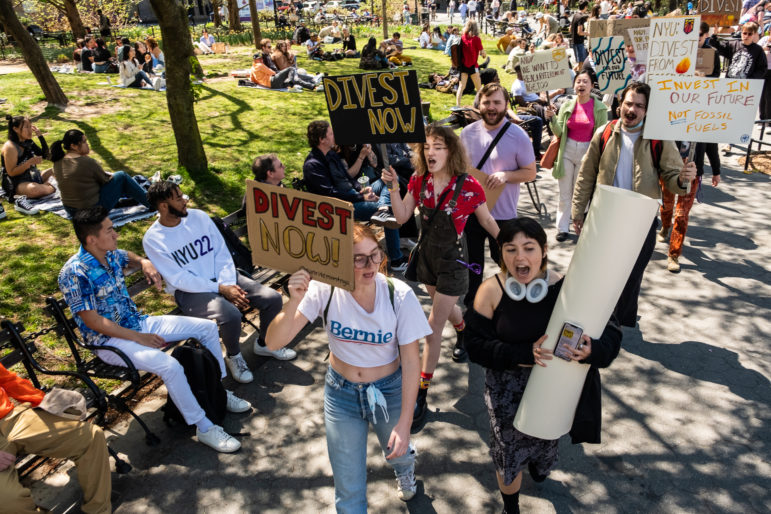
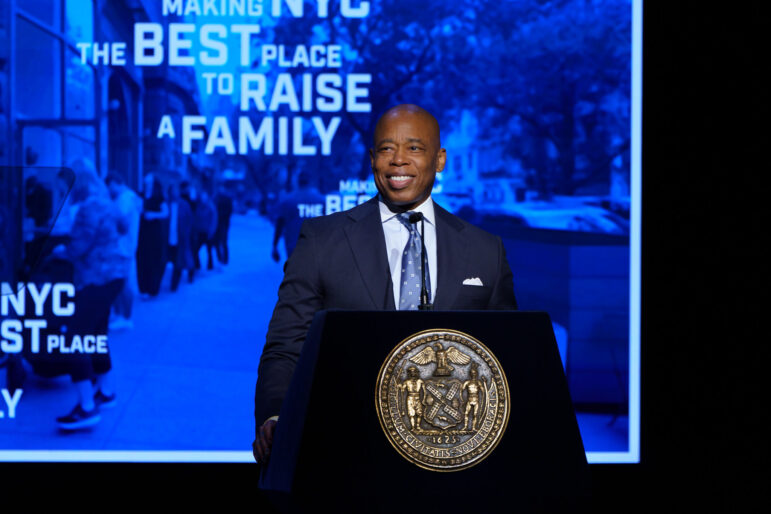
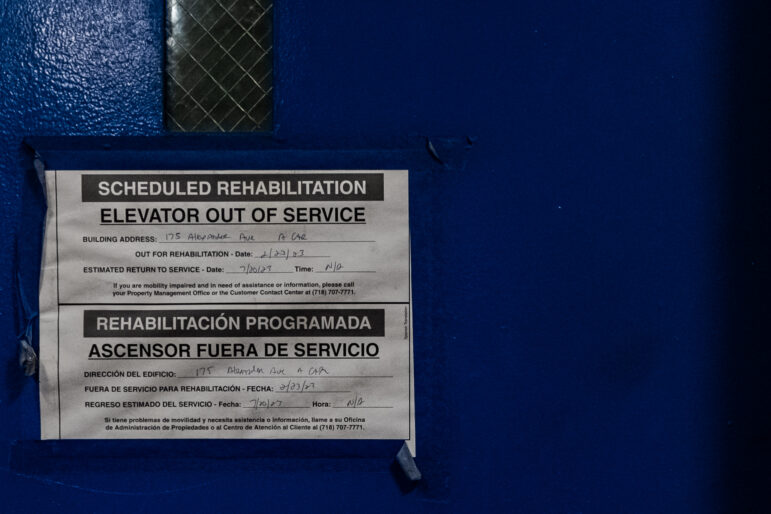

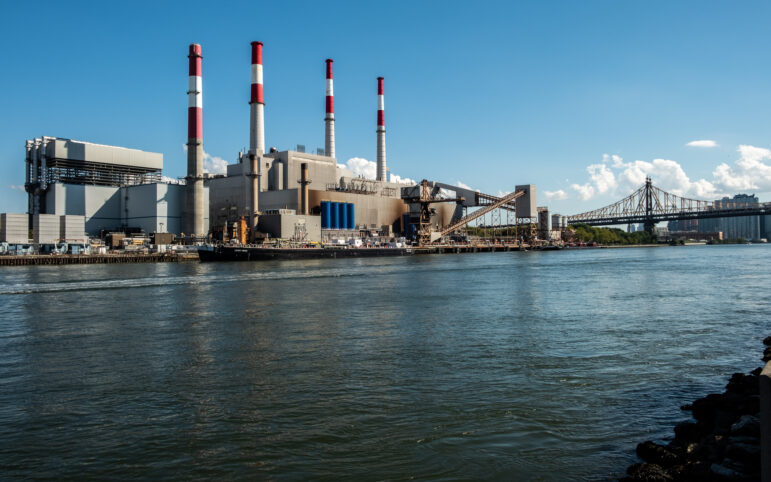


One thought on “Schools Pioneer Alternatives to the School-to-Prison Pipeline”
Pingback: Schools Pioneer Alternatives to the School-to-Prison Pipeline | The Subjective Reporter